The Simulation Center is fully interactive with real-time patient data equipment and displays at the bedside (vital signs, cardiac monitoring, and respiratory status). The six-room center has a central nurses’ station similar to those found in acute care settings, like hospitals. The Simulation Center also houses debriefing rooms and full audio-visual capabilities.
Floor Plan
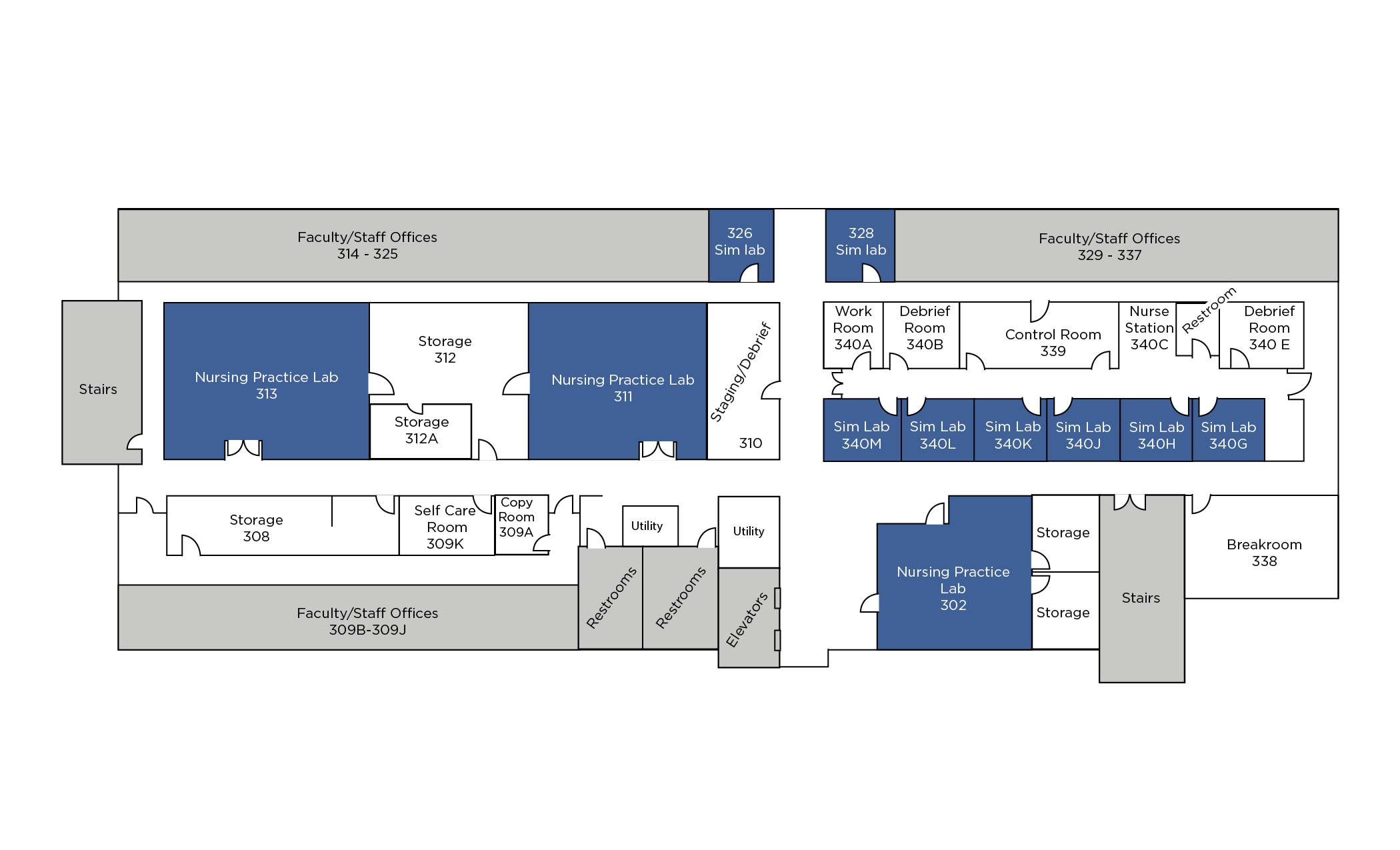
Simulation Rooms
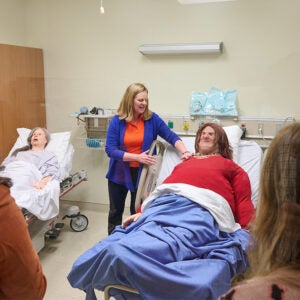
In our individual simulation rooms, students develop real-time decision-making skills in controlled scenarios with manikins and standardized patients. Here, our students practice interacting with distressed or restless patients, concerned family, and other healthcare team members all while helping identify and treat underlying medical concerns.
Practice Lab
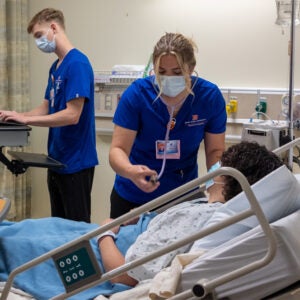
Our practice labs include several beds for patients or manikins. Here, our students work together and closely observe their classmates and instructors to learn essential nursing skills. This is where our students learn technical skills such as intubation, organ system checks, and cardiovascular resuscitation.
Self Care Room
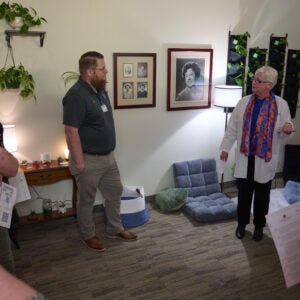
To answer both our students’ needs and the national issue, the Simulation Center team created a self-care space that also parallels their ongoing efforts to develop an open, welcoming, safe culture. The self care room is part of a holistic approach to nursing education that helps students understand the importance of self-care, especially since whatever they experience in clinical settings may have a ripple effect into other areas of their lives. Read more about the self care room.
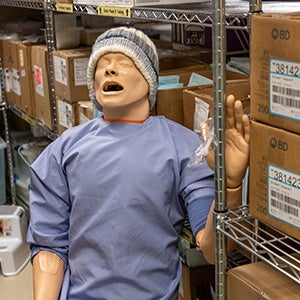
Manikins
The Simulation Center utilizes multiple high- and mid-fidelity manikins (adult, pediatric, and maternity/infant) Learn the basics about manikins.
Simulation Control Room
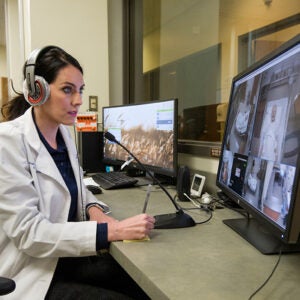
In the control room, faculty and staff monitor the progress of the scenario. Advanced audio and visual technology allows staff to give voice to manikins, adjust vitals in real time, and help guide students toward desired learning outcomes.
Debriefing Room
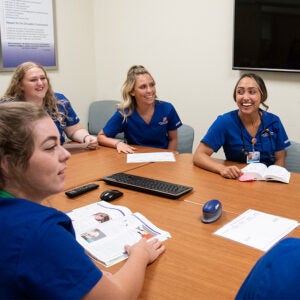
Debriefing rooms are equipped with monitors that allow live streaming of simulations for non-participating students. After the simulation, the whole class gathers in the room for a faculty-guided conversation. The debrief covers what students noticed and how they responded, what worked and what didn’t, and what they might do about it in the future.